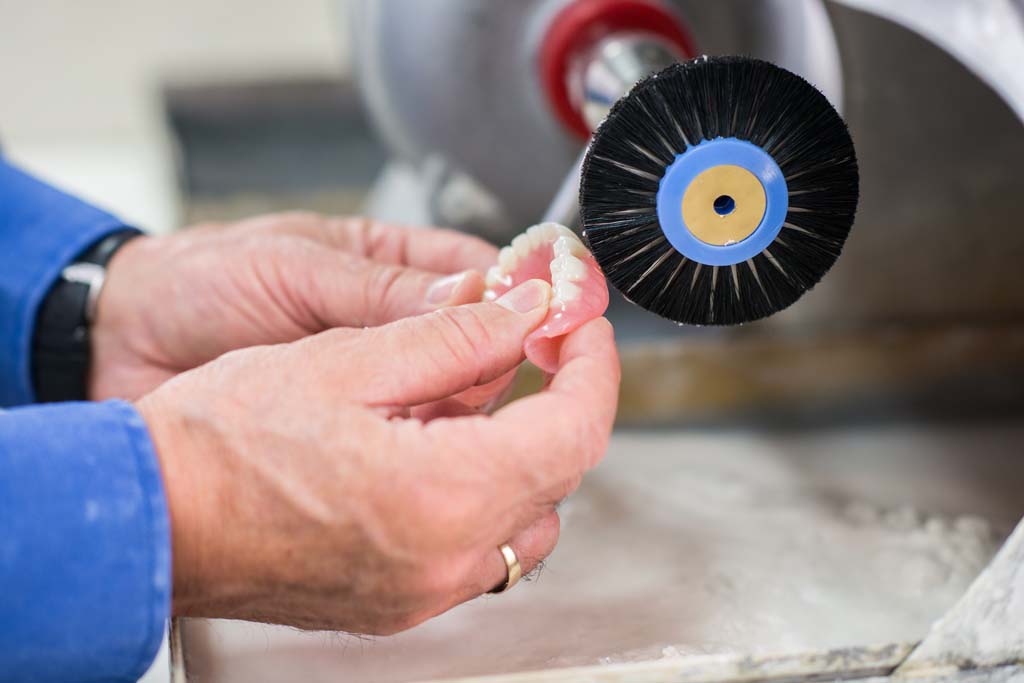Relining and rebasing prostheses
What should I do if my dentures are too big?
If your denture seems too large, unstable and food residue is getting trapped between it and your gums, the denturist will need to make modifications to your denture. In fact, it’s not the prosthesis that grows, but rather your mouth that changes.

Why does our mouth change over time?
The bone structure on which dentures rest is resorbed over the years. After the extraction of one or more teeth, the bone beneath the gums loses its stimulation. As a result, it tends to shrink in volume, rather like a limb that’s been in a cast for several weeks and loses muscle mass and, by the same token, bone mass. Jaws work in a similar way if they have no teeth with roots to stimulate the bone directly. Bone mass decreases with age and varies from person to person. This phenomenon is called bone resorption.
Rapid changes to the gums can also occur as a result of weight loss, a virus or illness, and the use of certain medications.
To refit dentures: Relining and rebasing
24H SERVICE for relining
Two procedures are used to refit dentures that have become “too big”: relining and relining.
Relining involves adding acrylic to the inside of the denture to fill the gap between the soft tissue and the denture. This can be done in a single step, directly at the denturist’s appointment. In general, this technique can be used to correct a problem at an affordable cost, and the lifespan of the repair is reasonable, depending on how well the prosthesis is maintained.
Rebasing, on the other hand, aims to completely replace the pink acrylic of the denture, while retaining the teeth of the old denture. Depending on the technique used, the process can be completed in a single day or over several days.

